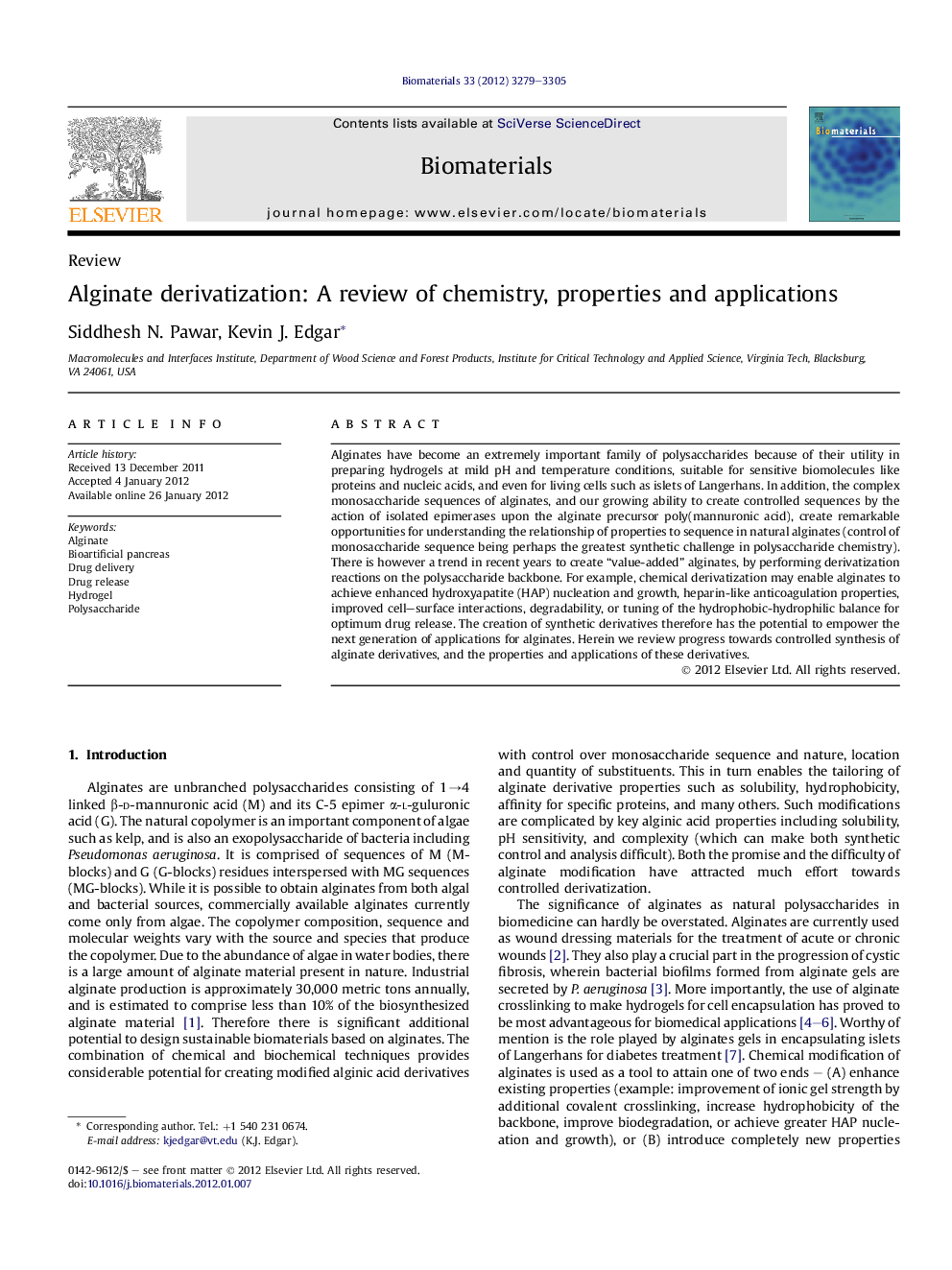| Article ID | Journal | Published Year | Pages | File Type |
|---|---|---|---|---|
| 6975 | Biomaterials | 2012 | 27 Pages |
Alginates have become an extremely important family of polysaccharides because of their utility in preparing hydrogels at mild pH and temperature conditions, suitable for sensitive biomolecules like proteins and nucleic acids, and even for living cells such as islets of Langerhans. In addition, the complex monosaccharide sequences of alginates, and our growing ability to create controlled sequences by the action of isolated epimerases upon the alginate precursor poly(mannuronic acid), create remarkable opportunities for understanding the relationship of properties to sequence in natural alginates (control of monosaccharide sequence being perhaps the greatest synthetic challenge in polysaccharide chemistry). There is however a trend in recent years to create “value-added” alginates, by performing derivatization reactions on the polysaccharide backbone. For example, chemical derivatization may enable alginates to achieve enhanced hydroxyapatite (HAP) nucleation and growth, heparin-like anticoagulation properties, improved cell–surface interactions, degradability, or tuning of the hydrophobic-hydrophilic balance for optimum drug release. The creation of synthetic derivatives therefore has the potential to empower the next generation of applications for alginates. Herein we review progress towards controlled synthesis of alginate derivatives, and the properties and applications of these derivatives.
